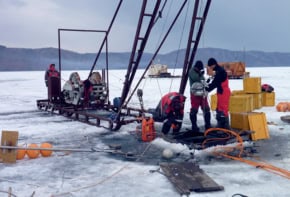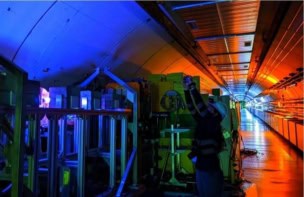
Changes to the operation of a planned Higgs factory could significantly improve its energy efficiency, but construction will have the biggest impact on the facility’s overall carbon footprint. That is the conclusion of an analysis of the potential environmental impact of the Cool Copper Collider (C3) – a proposed successor to CERN’s Large Hadron Collider (LHC).
Following the discovery of the Higgs boson in 2012 at the LHC, particle physicists are planning to build a so-called Higgs factory that would smash electrons with positrons to allow more detailed investigation of the properties of the Higgs boson and other particles.
There are currently five proposals with the International Linear Collider (ILC) in Japan, the C3 and the CERN-based Compact Linear Collider (CLIC) all based on linear accelerators. The Future Circular Collider (FCC-ee) at CERN and the China Electron Positron Collider (CEPC) in China, meanwhile, are circular colliders. C3 is a newer collider design proposed by the SLAC National Accelerator Laboratory in the US.
The researchers found that, in general, linear accelerators are more environmentally friendly than circular designs. This is because their compact size simplifies construction and reduces the amount of material needed. Indeed, tunnel lengths for future circular accelerators approach 100 km in length, while the linear options are around 10 km long.
This 10-fold difference in length significantly reduces the use of concrete, which has a significant carbon footprint, but also allows for simpler construction methods. Overall, the team says that building the main tunnels for the FCC and CEPC would produce around 578 and 638 kilotonnes of carbon dioxide equivalents (CO2e), respectively, compared with 73 and 144 kilotonnes CO2e for the main tunnels of the CLIC and C3, respectively.
A new discussion
When it comes to the overall operating energy consumption of the proposed colliders, the CEPC was found to be the highest with CLIC the lowest and the other three remaining similar. This analysis was based on factors such as power consumption, expected years of operation and particle collisions per year. The researchers also estimate that dedicated renewable energy facilities, such as solar farms, could roughly half the carbon intensity of the electricity used by any future collider.
Yet SLAC particle physicist Caterina Vernieri and colleagues argue that it is also important that scientific impact is balanced against environmental cost and efforts (PRX Energy 2 047001). While CLIC will have the lowest overall carbon footprint, they suggest that C3 would be the most environmentally friendly in terms of physics output. This is because it has a similar environmental footprint than CLIC but would carry out a precise determination of the Higgs bosons properties.
We need to think not only in terms of financial costs, but also environmental impact
Caterina Vernieri
The team found that the easiest way to lower the carbon impact of a future Higgs factory is to reduce its power usage. Their analysis shows that tweaks to the workings of the klystrons – responsible for creating the electromagnetic fields that drive the beams — as well as to the structure of the beam itself such as reducing bunch spacing, could reduce the energy consumption of the C3 beam, for example, by about 40%. CERN approves further work on Future Circular Collider – but delays final decision
Vernieri says that given their huge costs and environmental impact studying the sustainability of physics projects is a new but necessary field. “We need to think not only in terms of financial costs, but also environmental impact,” she says, adding that at least there is now a “whole new discussion” that is examining the carbon footprint of particle physics.
The researchers also say it is worth noting that CERN plans to re-use the FCC tunnel once its work as a Higgs factory is complete as a high-energy hadron collider. Yet this would not necessarily be a clear-cut climate win as it would require new beamline infrastructure with its own carbon costs. The team states that a detailed lifecycle analysis would be required to determine the possible climate advantages of reusing the FCC tunnel, which is beyond the scope of this study.



